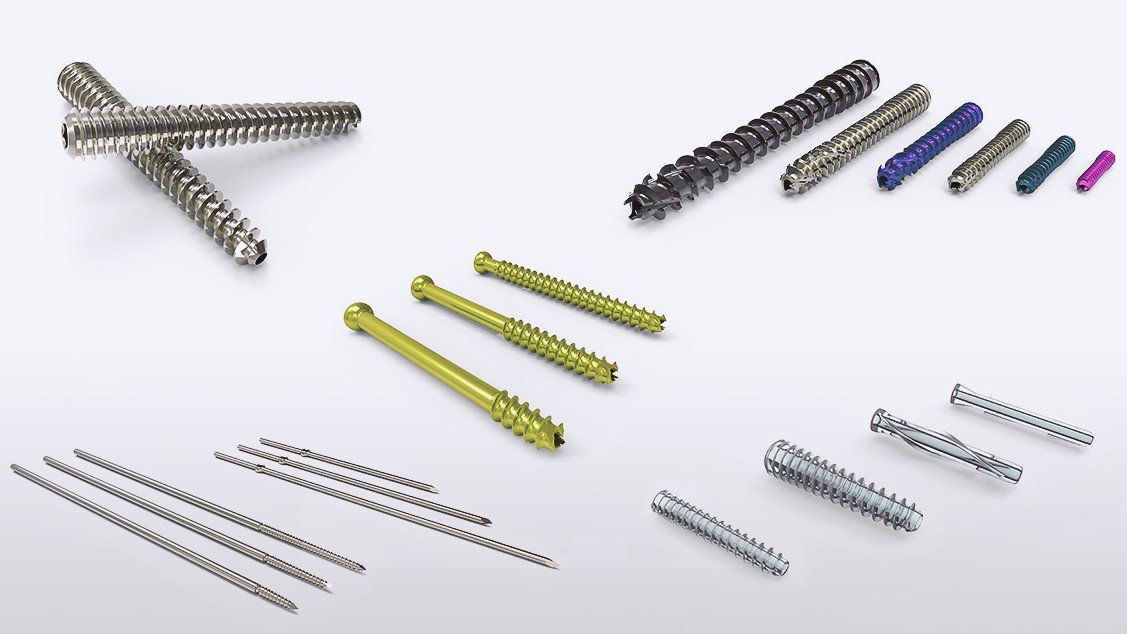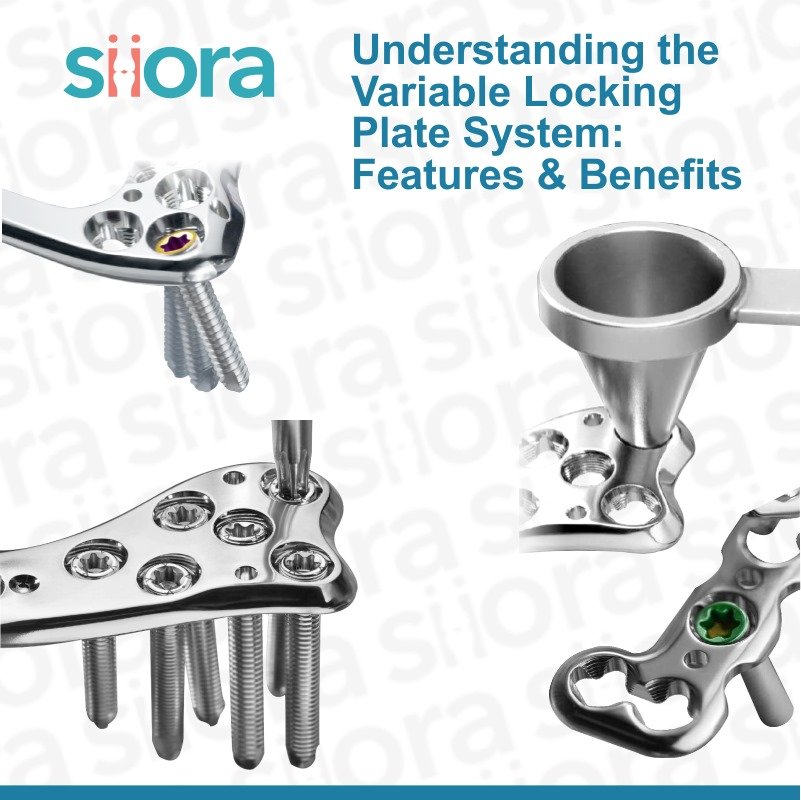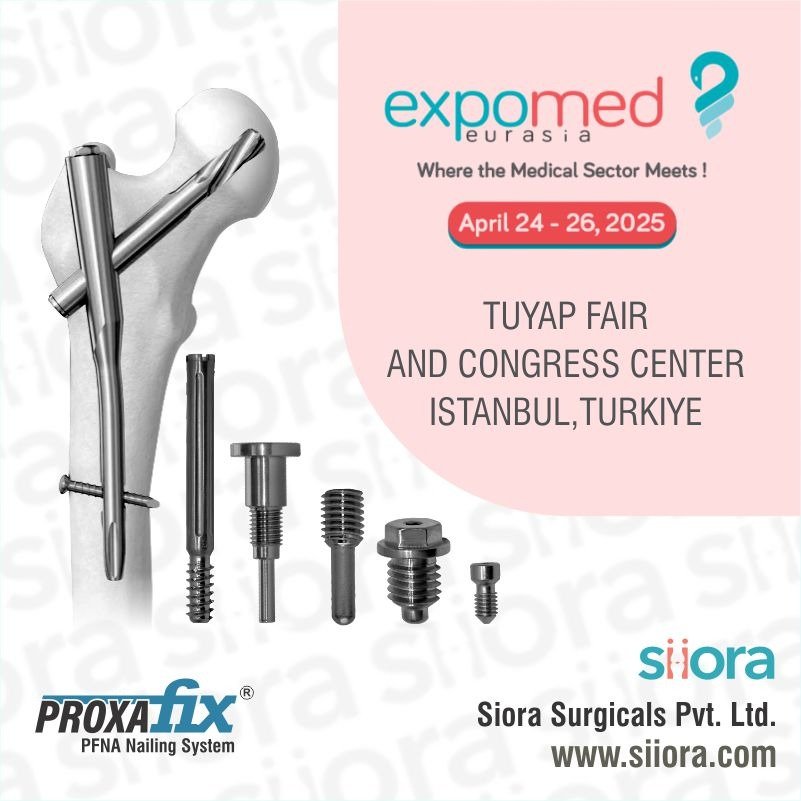Cancellous Screws
A cancellous bone screw has larger threads and a higher pitch in comparison to the cortical screw. It resembles a modified wood-type screw. It does not have a tapered tip. The core diameter, that is smaller than that of the shaft, offers a greater surface area for the purchase of the screw threads on the bone. A rise in the thread diameter of a cancellous screw raises its pull-out strength. A cancellous screw is inserted into a pilot hole that is untapped. The dimensions of the pilot hole equals the screw’s core diameter. Its big threads form companion threads in the bone by compression as well as by deforming the bone trabeculae. The spring reaction originates from the cancellous bone as the deformation occurs during the thread forming procedure.
Cortical Screw
The cortical bone screw is a machine-type screw. The threads are smaller (in diameter) and have a lower pitch. The core diameter is relatively large as well as offers the necessary strength. The smaller pitch rises the holding power of the screw. Threads cut in the pilot hole before one inserts the screw. One can attain this by a separate tool (tap) or by the screw’s self-tapping tip. The elastic reaction, vital to grip the bone surfaces together, comes from bone’s elastic deformation and not the screw. This happens as the screw is stiffer than the cortical bone. The modulus of elasticity of the screw is more than ten times that of bone; thus, much of the elastic deformation happens in the bone.
Whenever you position a screw in a bone, the bone deforms and offers the elastic binding force, irrespective of the kind of screw on the type of bone.
Self-tapping Screw
The term ‘self-tapping screw’ refers to a screw that is inserted directly into a pre-drilled hole without 1st tapping a thread. A self-tapping screw can further be subdivided into thread-cutting and thread-forming screws. The thread-forming sort moulds (i.e. forms) its own elastic-plastic deformation or by bone’s local destruction. The thread-cutting bone screw cuts its thread by the bone over which it advances.
The cancellous orthopedic screw is a thread-forming self-tapping screw. The screw thread makes its own mating bone thread through compressing the soft cancellous bone. A tap shouldn’t be used to insert a cancellous screw- a cancellous bone screw inserted in a tapped hole has lower pull-out strength than 1 inserted in an untapped hole, and as tapping removes cancellous bone from the hole, as well as effectively enlarges it. The amount of bone removed by tapping rises as the density of bone reduces the mean volume increase is about 25 percent. When a cancellous bone screw is to be inserted first hard cortical it’s essential to tap the cortical bone.
Cancellous taps are available alone for this reason. The smooth shaft of the cancellous bone screw offers the lag effect without the need for over-drilling. This becomes important in the larger 6.5 mm screws, where it would require to drill a very large hole near cortex to produce a lag effect. Changing lengths of partly threaded and fully threaded cancellous screws are utilized as indicated in different clinical situations.
A cortical bone screw can be either self-tapping or non-self-tapping.
A self-tapping cortical screw is a thread-cutting screw as well as has the cutting lip of a tap essentially milled into its tip. This device cuts a thread in the sense cortical bone on that the screw advances.
The self-tapping screws were criticized for a long period since it was supposed that a self-tapping screw would offer a poor hold in the bone as implanted in fibrous tissue rather than in the bone. Later research has shown this view to be not correct. Size for size, a self-tapping and a non-self-tapping screw have nearly the same holding power. The cutting flutes’ design of a self-tapping screw is significant. A poorly designed tip encounters significant resistance, mainly in thick cortical bone. At times the resistance can be such that the torque essential to drive in the screw is greater than the screw’s tolerance and the screw can break. The resistance to insertion can interfere with the accuracy of placement, mainly if one is trying to insert the bone screw obliquely to lag 2 bone fragments together.
The common us e of self-tapping screws is in bone surgery. One can insert them quickly, decreasing the operation time for internal fixation. Additionally, one needs relatively fewer steps and instruments. The screw tip must offer from the far cortex so that the flutes are clear and at least 1 complete thread engages the cortex. Reinsertion of a self-tapping bone screw into the same threaded hole cannot always be a cause for concern. Reinsertion, though, should be manual and a drill machine ought to be avoided as power insertion can inadvertently create a new track.
The main benefit of this screw is simplicity, as pre-tapping is not necessary. Moreover, it ensures a very tight fit of screw thread to the bone because the bone screw cuts its own precise thread.
Fully and Partially Threaded Screws
Cortical and cancellous screws are available as fully as well as partially threaded screws. A cortical bone screw often has full threads. In plate fixation, a bone screw must purchase firmly on both the cortices. The purchase on the near cortex contributes 80 percent of the grip and the distal cortex contributes around 20 percent. A fully threaded cortical screw may function as lag screw only once the near cortex is over-drilled. A fully threaded cortical screw can be either self-tapping or non-self-tapping.
We can also call a partially threaded cortical screw a shaft screw. The shaft diameter resembles the outer diameter of the thread. This screw has better strength as well as stiffness than a fully threaded screw. This is a benefit when one uses it as a lag screw and as an axial compression screw. It’s a non-self-tapping screw.
A locking cancellous screw can be fully threaded or partially threaded. One can use a fully threaded cancellous screw as a placement screw to fix a bone plate in metaphyseal as well as epiphyseal regions. We can use a partially threaded cancellous screw as a lag screw.








